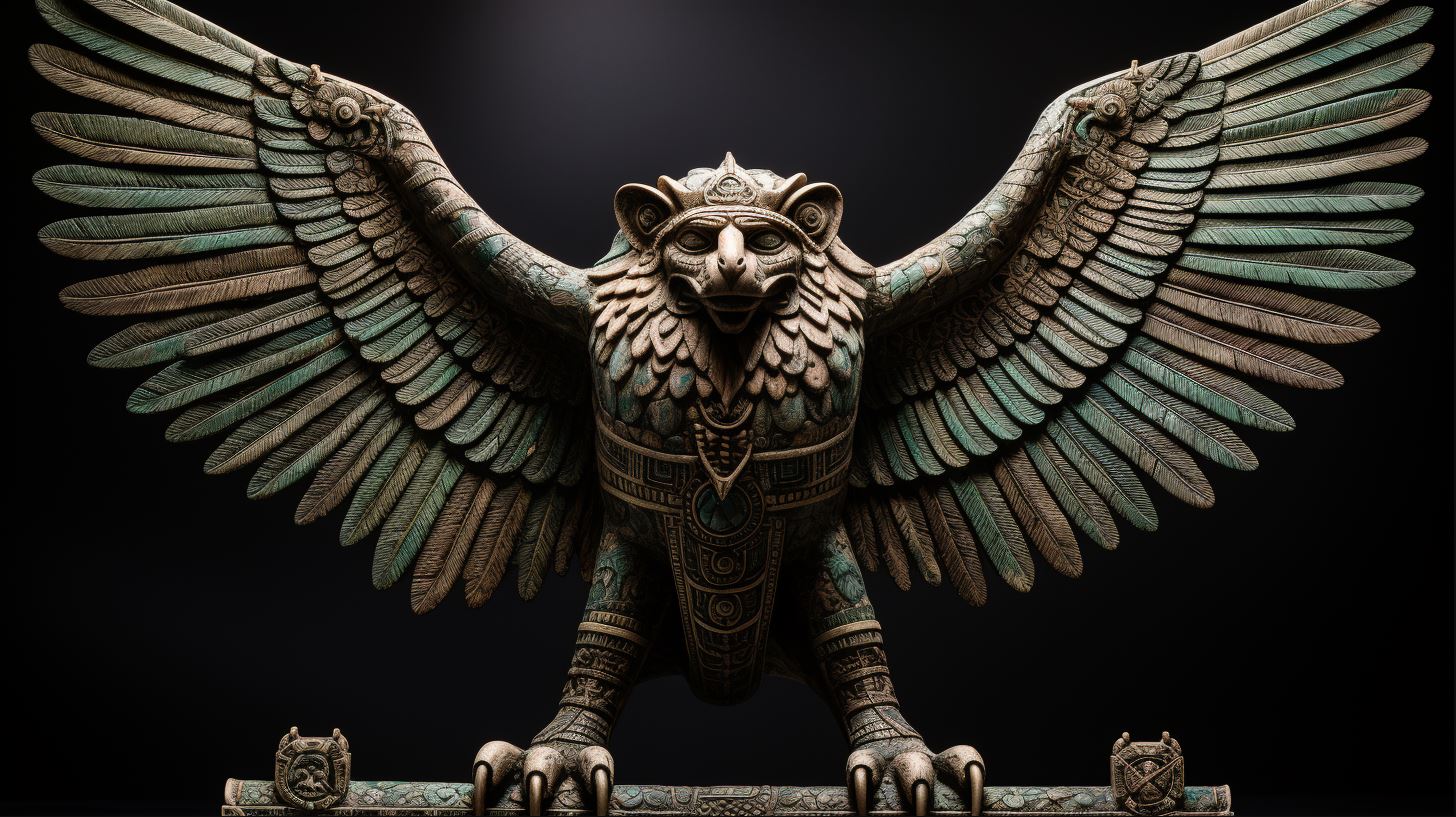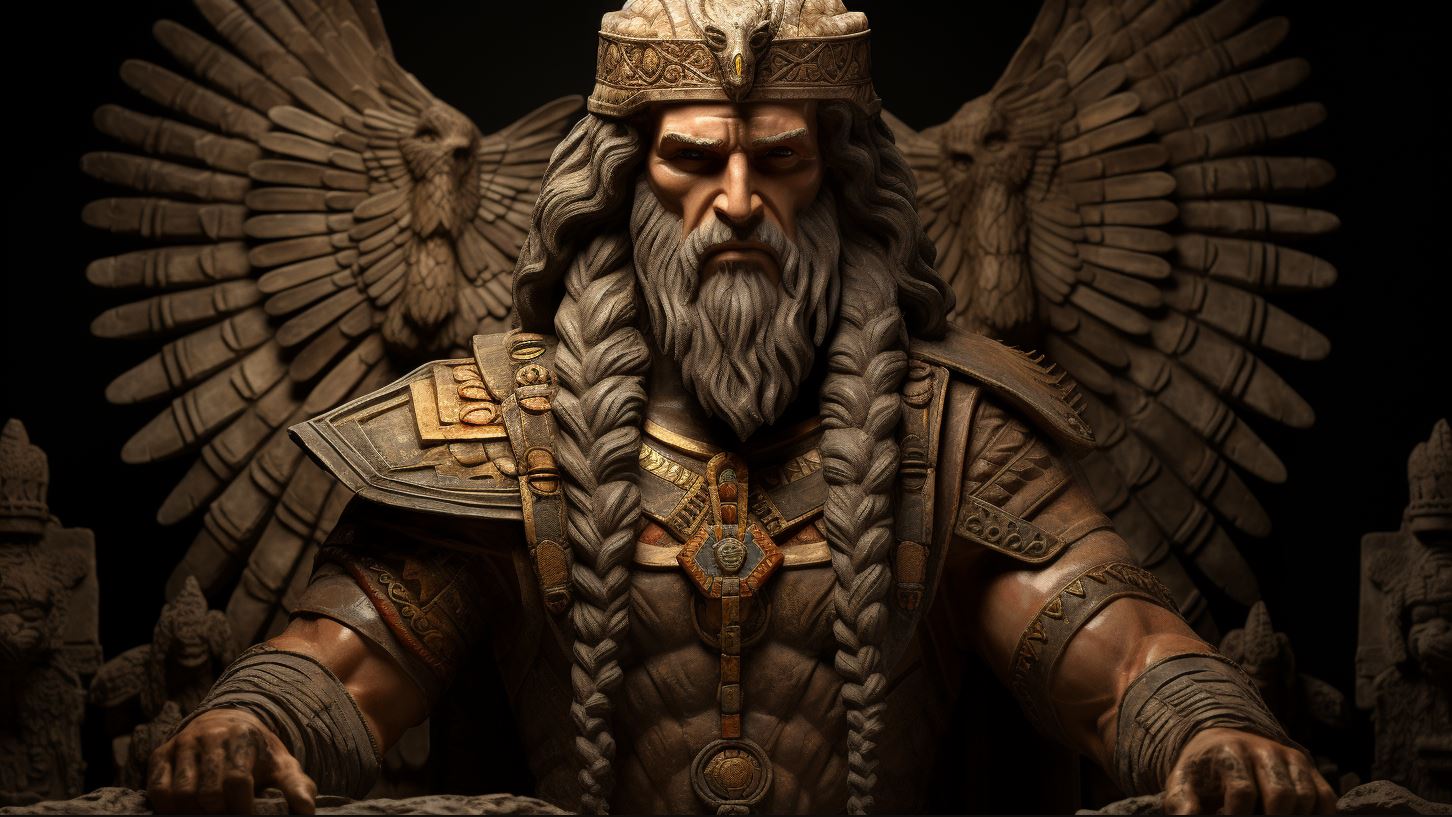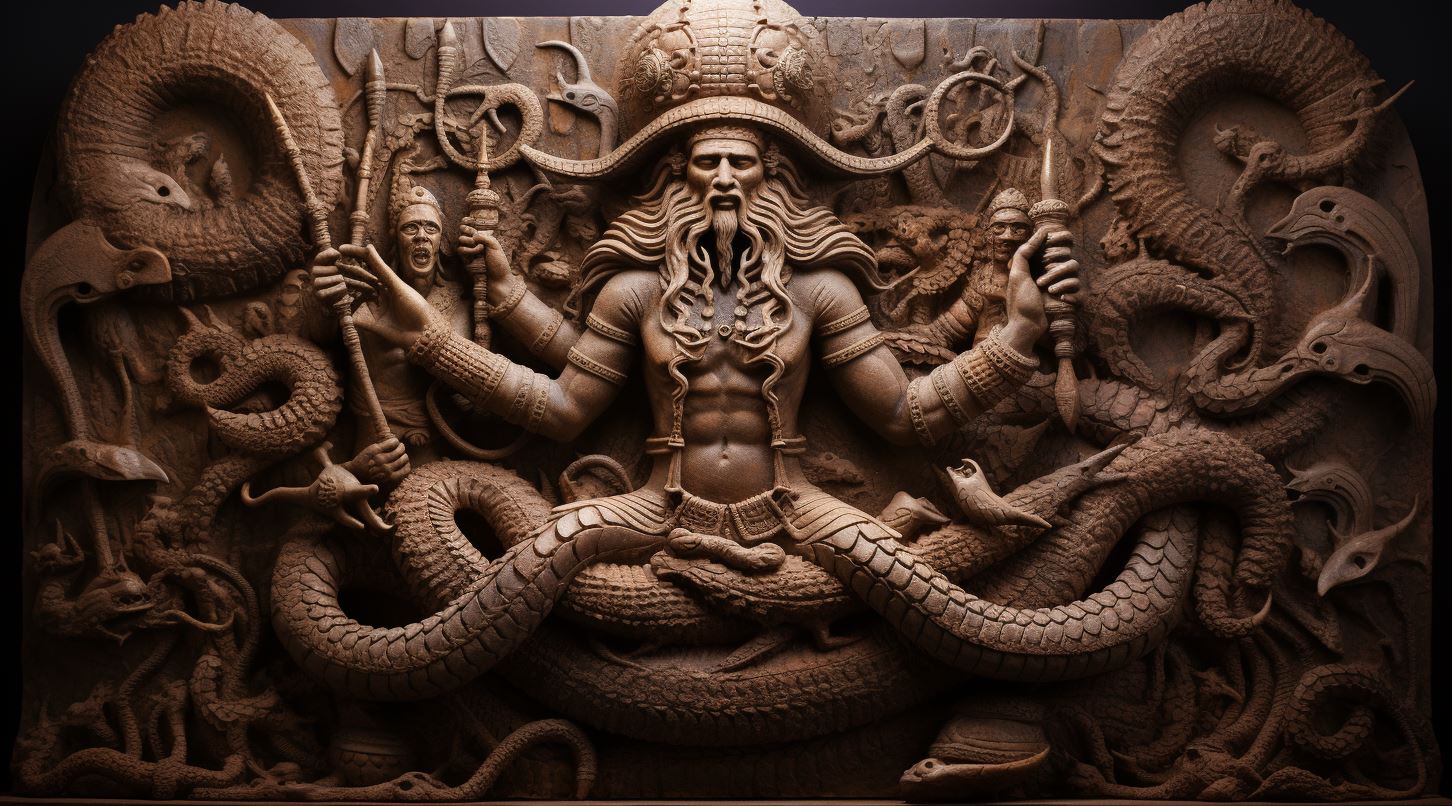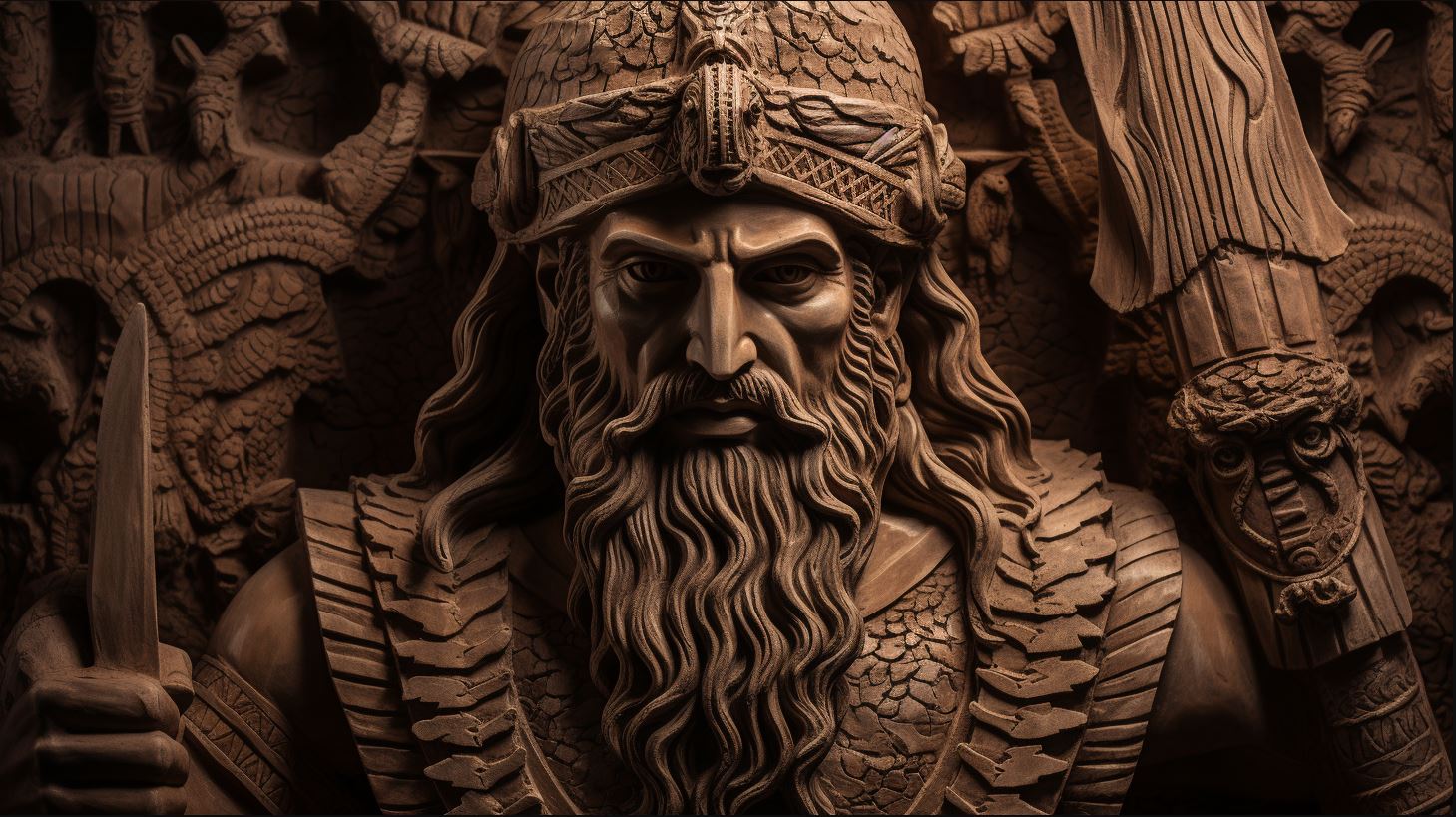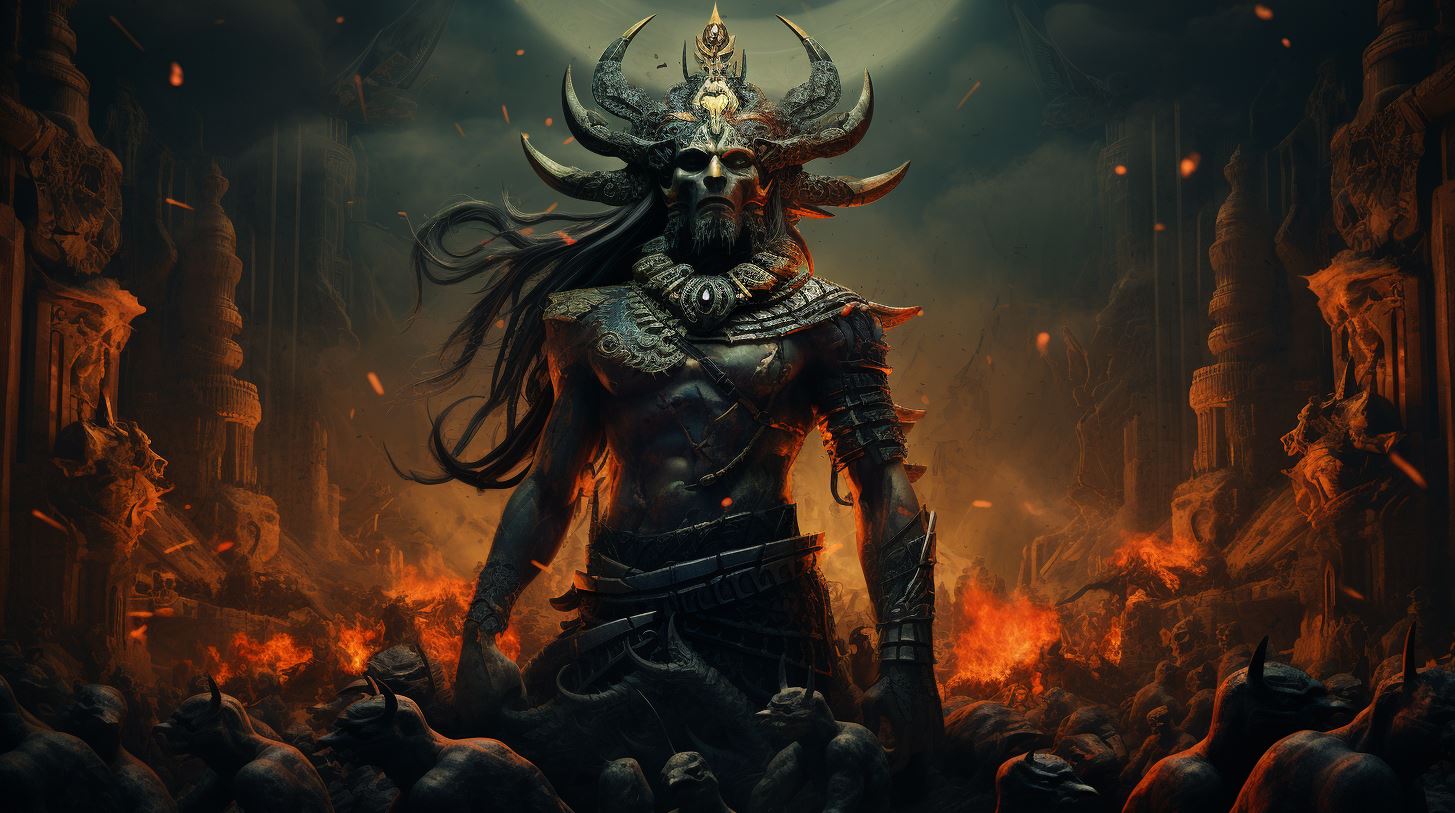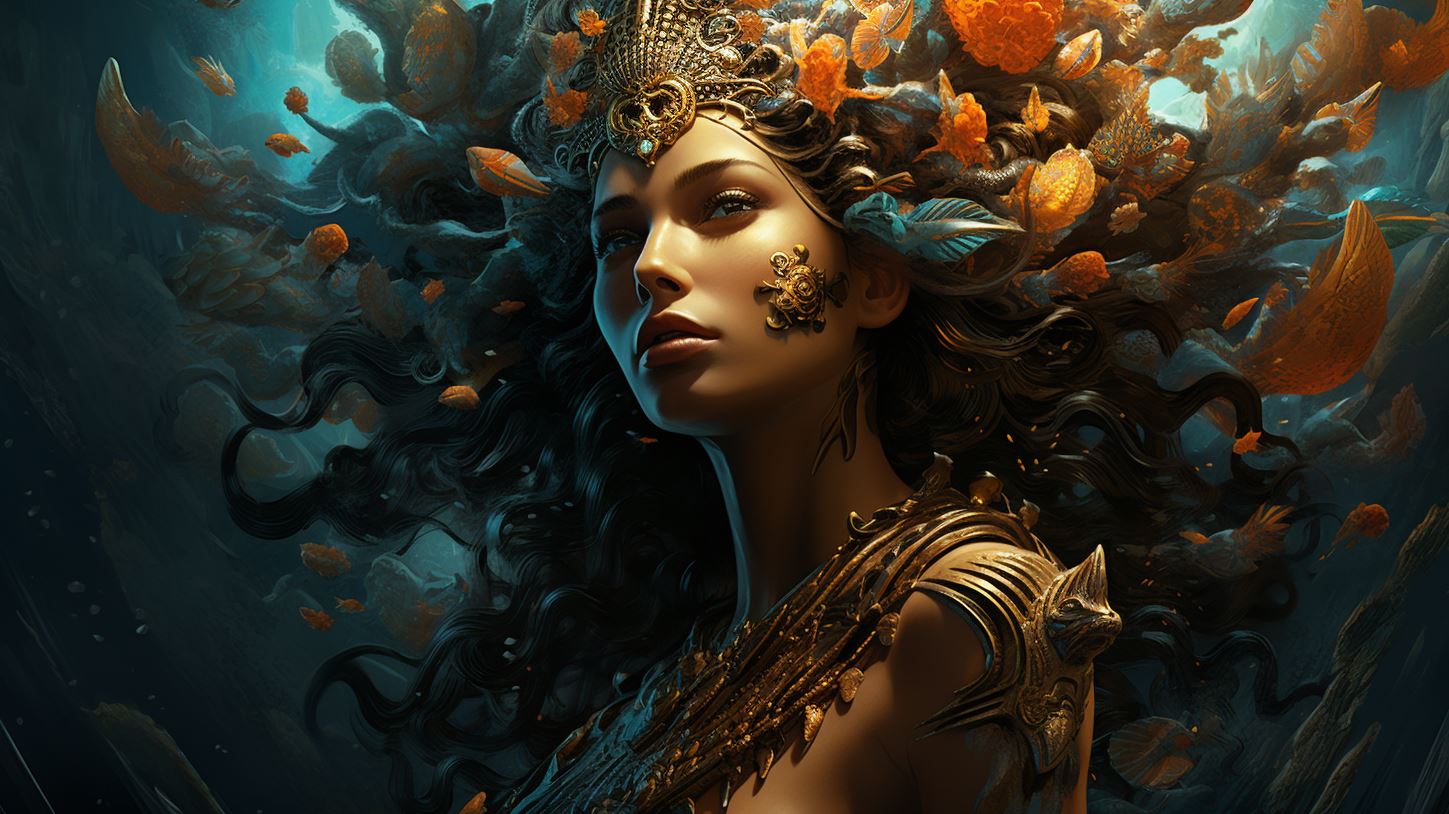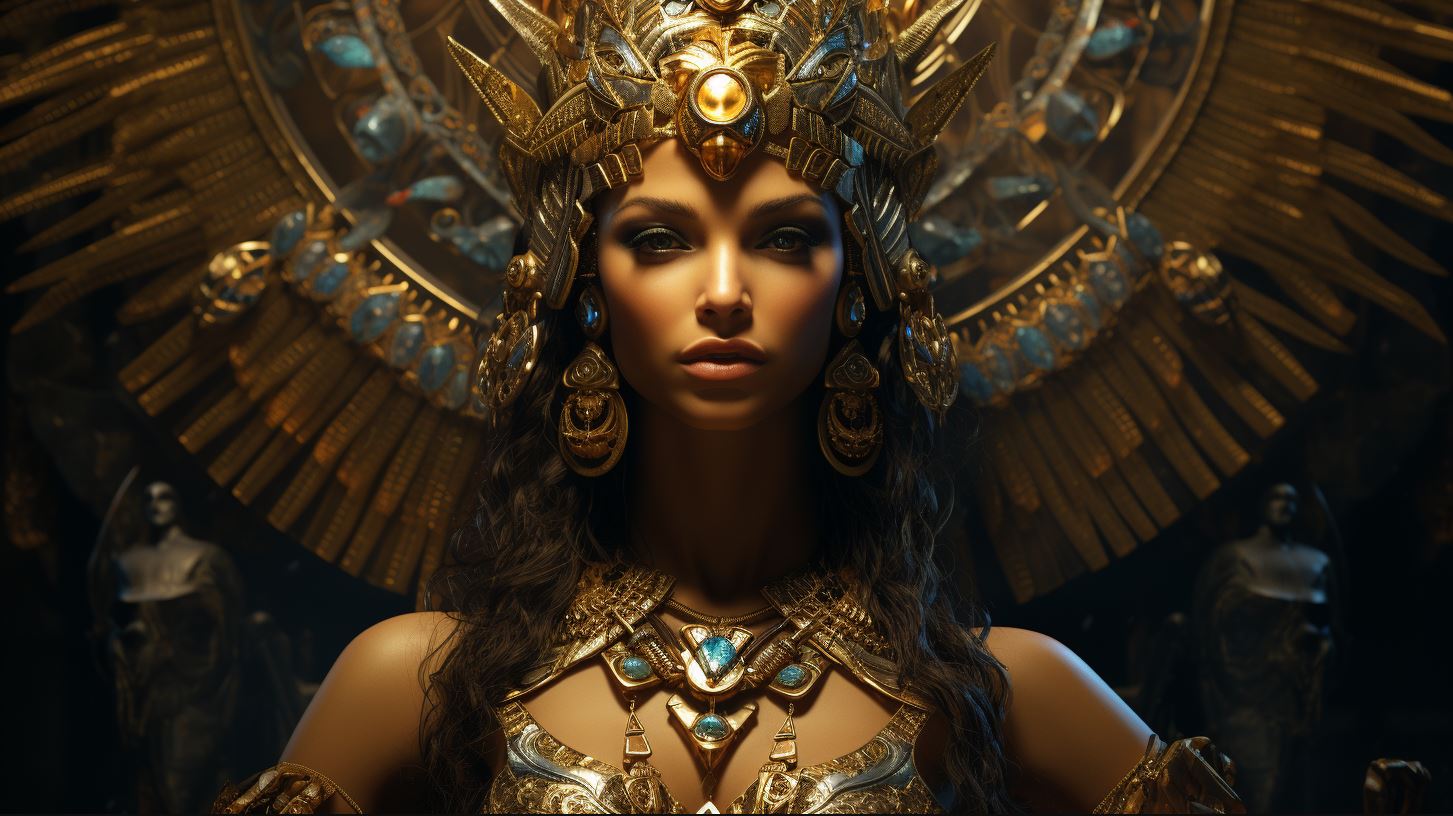Anzu Sumerian God: Exploring the Mythology and Cultural Significance
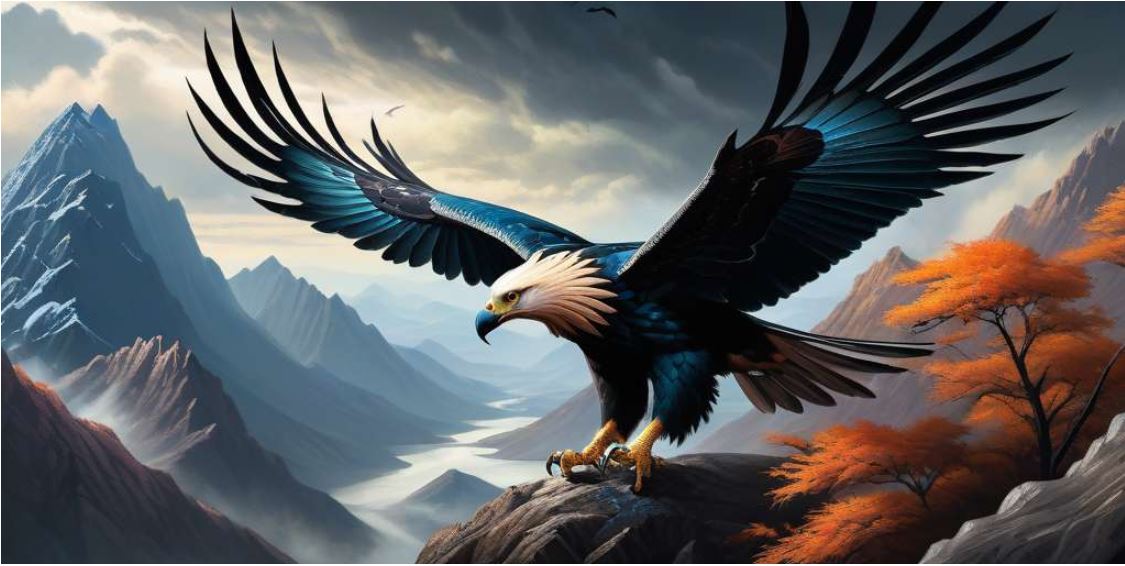
The Anzu Sumerian god, also known as Zu or Imdugud, is a demon creature from Mesopotamian mythology. It is depicted as a bird with features of an eagle and lion.
Associated with natural phenomena like storms and strong winds, Anzu has appeared in various stories throughout time. This article provides an overview, explores its mythology, symbolism, representations, ancient texts, cultural significance, and modern adaptations.
A comprehensive reference list is included for further exploration.
Overview of Anzu Sumerian God
The Anzu Sumerian god, also known as Zu or Imdugud, is a fascinating creature deeply rooted in Mesopotamian mythology. It is depicted as a bird with eagle and lion characteristics, often associated with storms and powerful winds.
In ancient Mesopotamian texts and epics, Anzu plays significant roles, interacting with gods and humans alike.
In Sumerian mythology, Anzu appears in the epic tale of Lugalbanda, where it grants magical powers to King Lugalbandb in exchange for the establishment of a cult in its honor in the city of Uruk.
Another notable story involves Anzu guiding the god Ninurta towards Apsu , revealing his destiny in return for a promise to create a dedicated cult for the Anzu bird.
Symbolically, Anzu represents the fusion of military ideals and scholarly knowledge in Assyrian kingship.
The confrontation between Anzu and Ninurta symbolizes the rulers’ reliance on both intellect and strength to maintain order and make strategic decisions. The Tablilla del Destino, which contains the gods’ decisions for the future of Assyria, further underscores the god’s significance in ensuring victory in battles.
In modern times, the Anzu bird has transcended ancient Mesopotamian culture, inspiring adaptations in various media forms, such as the popular video game World of Warcraft. Its diverse representations and moral dynamics across different myths reflect the evolution of Mesopotamian societies and their interpretations of this intriguing deity.
The Mythology of Anzu
The mythology surrounding Anzu, the Sumerian god, is rich and diverse, encompassing both Sumerian and Babylonian traditions. Through numerous myths and epics, Anzu is depicted as a significant figure with various roles and characteristics.
Anzu in Sumerian Mythology
In Sumerian mythology, Anzu is often portrayed as a powerful and menacing creature. According to the epic of Lugalbanda, the king visits Anzu in the mountains, where Anzu grants him magical powers in exchange for establishing a cult in his honor.
This highlights Anzu’s influence and association with divine gifts and worship.
Anzu in Babylonian Mythology
In Babylonian mythology, Anzu is featured prominently in the myth of “Anzu Bird and the Tablets of Destiny.” Here, Anzu steals the Tablets of Destiny, leading to chaos in the cosmos.
Ninurta, the warrior god, is chosen to confront and defeat Anzu, restoring order and balance. This myth emphasizes Anzu’s role as a disruptor and the need for divine intervention to restore harmony.
In both Sumerian and Babylonian mythology, Anzu represents a captivating and complex deity whose actions have profound implications for the gods and the mortal world.
Symbolism and Representations of Anzu
Within the mythology of the Anzu Sumerian god, there are various symbols and representations associated with this legendary being. The physical description of Anzu, in particular, portrays a creature that combines the characteristics of an eagle and a lion.
Physical Description of Anzu
Anzu is often depicted as a bird-like creature with the body of a lion and the wings, talons, and beak of an eagle. This fusion of attributes symbolizes its power and dominance in the mythological realm.
The combination of the king of birds and the king of beasts represents its majestic nature and its ability to command respect.
Anzu’s Role in Mesopotamian Culture
In Mesopotamian culture, Anzu played a significant role in various aspects of society. It was closely associated with stormy weather, harsh winds, and the forces of nature. This connection between Anzu and natural phenomena highlights the ancient Mesopotamians’ belief in divine intervention in the world.
Furthermore, Anzu’s role extended beyond its association with climatic events. It had a presence in religious practices, where it was both feared and revered. The mythological stories surrounding Anzu’s interactions with gods and its demand for cult worship illustrate its importance in religious rituals and beliefs.
Overall, Anzu’s symbolism and representations reflect its power, dominance, and influence in Mesopotamian culture. Its physical attributes and role in society contribute to its significance as a supernatural entity within the ancient civilization.
Anzu in Ancient Texts and Epics
Anzu, the Sumerian god, is prominently featured in various ancient texts and epics that have survived from Mesopotamia. These texts provide crucial insights into the mythology and significance of Anzu within the cultural context of ancient civilizations.
Anzu in the Epic of Lugalbanda
The Epic of Lugalbanda, an ancient Sumerian poem, recounts the encounter between the king Lugalbanda and the mighty Anzu bird. In this tale, Lugalbanda ventures into the mountains and seeks the Anzu bird’s assistance.
As the ruler of Uruk, Lugalbanda strikes a pact with Anzu, acquiring magical powers in exchange for establishing a cult dedicated to the bird within the city. This narrative highlights the interplay between human and divine realms and the utilization of divine assistance for human gain.
Anzu’s Encounter with Ninurta
Another prominent story involving Anzu is his encounter with the god Ninurta. In this narrative, Anzu reveals Ninurta’s destiny and aids him in locating Apsu, resulting in Ninurta’s promise to establish a cult devoted to Anzu.
The subsequent myth, known as the Babylonian myth of the Anzu bird and the Tablets of Destiny, revolves around Anzu’s theft of the Tablets of Destiny and Ninurta’s divine appointment to restore cosmic order by defeating him.
These ancient texts and epics emphasize the mythical qualities of Anzu and his interactions with both mortal rulers and powerful deities, showcasing his role in shaping the ancient Mesopotamian cosmology and religious practices.
Cultural Significance and Variations
The cultural significance of the Anzu Sumerian god can be seen in the variations and interpretations found in different mythological stories. Anzu’s moral ambiguity is evident in the contrasting myths where it is depicted as both a benefactor and a malevolent being.
Anzu’s Moral Ambiguity in Different Myths
- In some myths, Anzu is portrayed as a formidable creature who poses a threat to gods and humans, causing chaos and destruction with its association with storms and strong winds.
- However, other myths suggest a more benevolent nature of Anzu, where it aids gods and imparts wisdom or special powers.
Evolution of Anzu’s Interpretation in Mesopotamian Civilizations
The interpretation and understanding of Anzu varied across different Mesopotamian civilizations.
Each civilization might have perceived Anzu in distinct ways, influenced by their cultural and societal evolution.
- The representations of Anzu in monumental sculptures depict it as a wild creature of the mountains, symbolizing the untamed forces of nature.
- Interestingly, Anzu could also be domesticated by the gods, implying a sense of control and order over chaotic forces.
The evolution of Anzu’s interpretation reflects the dynamic nature of Mesopotamian culture, where complex ideas and beliefs intertwined with their understanding of mythology and the natural world.
Modern Adaptations and Influences
In the modern era, the Anzu Sumerian god continues to captivate and inspire various forms of media and artistic expression. Let’s explore how Anzu has made its presence felt in popular culture and has influenced contemporary art and literature.
Anzu in Popular Culture and Media
Anzu has appeared in various forms of media, particularly in the realm of gaming and fantasy literature. One notable example is the popular video game “World of Warcraft,” where Anzu is featured as an aesthetic element within the game world.
Gamers often encounter Anzu as a potent enemy or a powerful ally, adding a touch of mythological allure to their gaming experience.
Anzu’s Influence on Contemporary Art and Literature
Anzu’s intriguing mythology and its symbolism have inspired artists and writers in their work.
Contemporary art showcases imaginative interpretations of Anzu’s physical appearance and its role in ancient Mesopotamian culture. Similarly, in literature, Anzu’s enigmatic persona has served as a source of inspiration for authors exploring themes of ancient myths, epic storytelling, and the blending of human and animalistic characteristics.
- Anzu’s fascinating presence in popular culture and media
- Anzu’s portrayal in the renowned video game “World of Warcraft”
- Influence of Anzu’s mythology on contemporary art and its depictions
- Anzu’s role as a muse for authors in literature, exploring ancient myths and symbolism
Through these modern adaptations and influences, Anzu’s legacy continues to thrive, keeping its mythical aura alive in the hearts and minds of people today.











